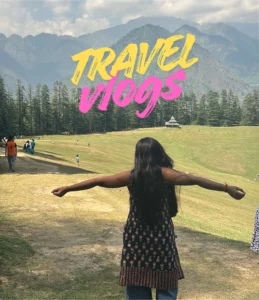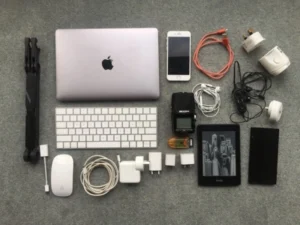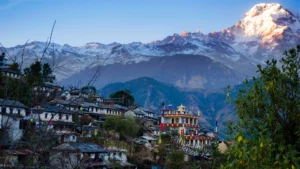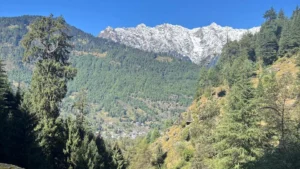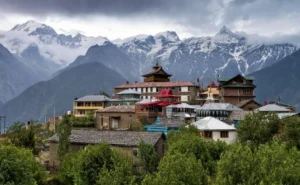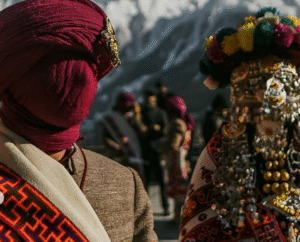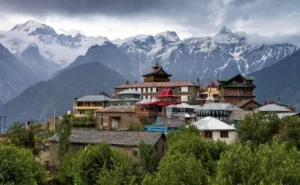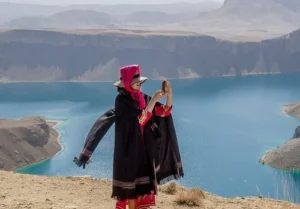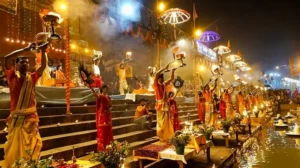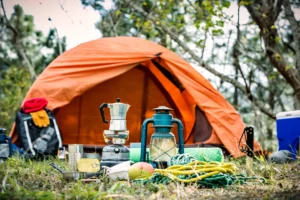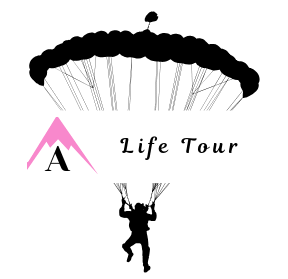Have you ever visited Kinnaur? Or do you know its hidden gems? Himachal Pradesh’s eastern Himalayas, Kinnaur, is a land of dramatic contrasts. Where high-altitude deserts and Hindu temples stand beside ancient Buddhist monasteries. Once closed to outsiders, it now quietly welcomes explorers with its untouched valleys, sacred peaks, and timeless villages. Whether you’re chasing views of Kinner Kailash or wandering through Chitkul. India’s last village near Tibet, Kinnaur, offers more than scenery—it offers silence, stories, and soul. However, Kinnaur isn’t just apple orchards and postcard views. It’s a layered landscape of forgotten forts, mystical valleys, and cultural fusion. Here are the hidden gems of Kinnaur, which will be on every explorer’s radar: 1. Ribba Village—The Land of Chilgoza Pines Want to explore a pine forest? That too in a village. Well, here is the place called Ribba Village, locally known as Rirang. The entire spot is surrounded by Chilgoza pine forests, grape vineyards, and dramatic Himalayan ridges. Moreover, it is famed for its rare pine nuts and locally brewed Angoori wine. The village blends Hindu and Buddhist traditions, with the ancient Kasuraj Ji Temple at its heart. Are you the person who loves peaceful spots? This spot suits you well!! The village seems quiet, culturally rich, and largely untouched by tourism. Furthermore, Ribba offers explorers a rare glimpse into Kinnaur’s soulful high-altitude life. And you know? This place is a gem in Kinnaur, which makes the explorers forget their souls. Moving forward, the spot is best known for rare pine nuts and local wine. A quiet escape with surreal Himalayan backdrops and warm village hospitality makes the visitor’s experience have a heavenly feel. 2. Kamru Fort—A Forgotten Sentinel Kamru Fort is a must-visit for architecture lovers. It offers a striking blend of ancient craftsmanship and Himalayan heritage. The spot is perched above the village of Kamru near Sangla in Kinnaur. It is a stunning example of traditional Himachali architecture. Once the capital of the Bushahr Kingdom, this multi-tiered wooden fort houses the sacred Kamakhya Devi Temple. Also, it offers panoramic views of the Sangla Valley. The best thing is, the spot is surrounded by apple orchards and steeped in legend. Kamru Fort blends history, spirituality, and craftsmanship, making it a must-visit for explorers seeking depth beyond the scenery. Highlights: Wooden architecture, ancient idols, and panoramic valley views. These are the things that make this place a hidden gem in Kinnaur. Visit this spot once in your lifetime. 3. Lippa-Asrang Wildlife Sanctuary – Offbeat Wilderness Again, Lippa-Asrang Wildlife Sanctuary, located in Kinnaur, is a heaven for solitude seekers and nature lovers. Spanning over 30.89 sq km at altitudes between 4,000 to 5,022 meters, it shelters rare Himalayan species. Animals like snow leopards, musk deer, and blue sheep are found amid alpine scrub and coniferous forests. This place is located near Moorang, and this sanctuary offers raw wilderness and rich biodiversity. But entry requires prior permission, preserving its untouched charm for truly mindful explorers. 4. Moorang—Myth Meets Majesty Perched on the banks of the Sutlej River, meanwhile, Moorang is a quiet village steeped in Kinnaur. Its crown jewel, the ancient Moorang Fort, is believed to have been built by the Pandavas. This adds a mythical aura to its weathered wooden walls and stone foundations. You can spot the fort’s elevated position, which offers sweeping views of the valley surrounded by traditional Kinnauri homes Moorang is not just scenic; it’s a living story. Where nature and folklore meet in majestic silence. 5. Hangrang Valley – The Untamed Frontier Tucked deep in upper Kinnaur near the Indo-Tibetan border, Hangrang Valley is a stark, high-altitude landscape where silence reigns and nature feels raw. It is Kinnaur’s second-largest valley after Sangla and stretches from Nako to Chango. Moreover, it is connecting the green forests of Kinnaur to the cold desert of Spiti. Trekkers and solitude seekers are drawn to its rugged terrain, sparse vegetation, and spiritual stillness. Are you a photoholic? You can go off-grid trekking and take pictures as much as you can. 6. Rakchham – The Valley of Silence Next, located between Sangla and Chitkul in the Baspa Valley, Rakchham is a peaceful village. It is surrounded by pine forests, alpine meadows, and towering Himalayan peaks. With a small population and minimal tourist infrastructure, it offers a rare kind of stillness that feels almost sacred. The gentle flow of the Baspa River, seasonal migration of local shepherds, and crisp mountain air make Rakchham a perfect retreat. The explorers seeking quiet reflection and raw natural beauty can try this place once. You can vibe with the meadows, pine forests, and a spiritual hush that’s hard to describe. 7. Kothi Village – Temple of the Goddess Kothi is a culturally rich village located just below Kalpa in Kinnaur. The village is revered for the ancient Shuwang Chandika Devi Temple. Where locals worship one of the region’s most powerful goddesses. The temple features a golden idol carried in ceremonial dances. It is surrounded by traditional wooden homes and sacred tanks. Kothi’s spiritual energy and architectural charm make it a meaningful stop for those drawn to heritage and Himalayan mysticism. If you like a trip mixed with devotional and adventures. This is a must-try!!! 8. Yulla Kanda—World’s Highest Krishna Temple Yulla Kanda is a great choice for your next trip. This place is not just about trekking but is also a place of religious importance. Yulla Kanda is a village in the Kinnaur district of Himachal Pradesh. Yulla Kanda is open for visitors throughout the year, but the best time to go is between April and October. The weather is pleasant during these months, and the base camps are functional. The world’s highest Krishna temple will amaze you with its beauty and the lake in the middle of the mountains. Coming to Stories behind this temple are what you need to hear from the locals that amaze every second of how it can happen. Like, someone told me that nobody knows how this lake is made. Another

